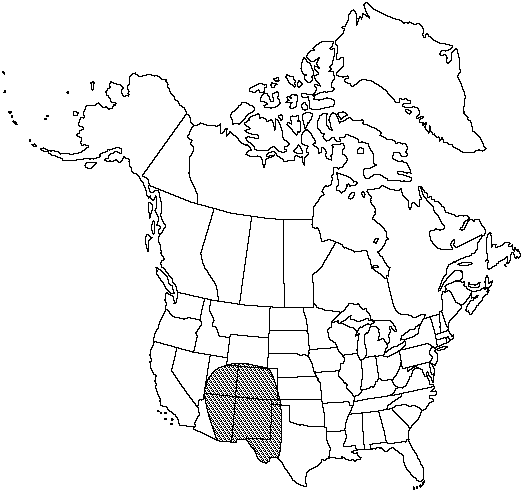Selaginella underwoodii
in Engler & Prantl,Nat. Pflanzenfam. 1: 714. 1901.
Plants on rock, forming loose festoonlike mats or rarely compact mats. Stems radially symmetric, long-creeping, short-creeping, or pendent, not readily fragmenting, irregularly forked, without budlike arrested branches, tips straight; main-stem indeterminate, lateral branches determinate, spreading, 1–2-forked. Rhizophores borne on upperside of stems, throughout stem length, 0.15–0.27 (–0.3) mm diam. Leaves monomorphic, in alternate pseudowhorls of 4 (on main-stem and older lateral branches) or 3 (on young lateral branches and secondary branches), loosely appressed, ascending, green, linear to linear-lanceolate or narrowly triangular-lanceolate, (2–) 2.5–3.4 × 0.45–0.5 (–0.7) mm; abaxial ridges prominent; base mostly cuneate and decurrent, rarely rounded and adnate (on young branches), pubescent or glabrous; margins entire to denticulate or very short-ciliate, cilia transparent, scattered, mostly ascending, dentiform toward apex, 0.02–0.07 mm; apex keeled, slightly attenuate, short to long-bristled; bristle transparent greenish to greenish-yellowish, rarely white, smooth, seldom slightly puberulent, sometimes breaking off, 0.25–0.7 (–1) mm. Strobili sometimes paired, 0.5–3.5 cm; sporophylls lanceolate to ovatelanceolate, abaxial ridges prominent, base glabrous, with prominent auricles (no other species has such prominent auricles), margins entire or very short-ciliate to denticulate, apex keeled, short to long-bristled.
Habitat: Moist or shaded cliffs, rocky slopes, rock crevices, granitic outcrops, hanging over granite cliffs, sandstone or limestone ledges
Elevation: (800–)1500–3000(–4000) m
Distribution

Ariz., Colo., N.Mex., Okla., Tex., Utah, Wyo., Mexico in Chihuahua and Nuevo León
Discussion
R. M. Tryon (1971) reported that the bristle on Selaginella underwoodii leaves is longer (to 1.44 mm) in the southern part of the range and shorter (to 0.43 mm) northward and in central Arizona. Selaginella underwoodii seems to be closely related to S. oregana, perhaps sharing a common ancestor.
Selected References
None.